
With all the glorification of our “heroes” in uniform—a glorification that seems to grow in inverse proportion to the real need for them—a person could begin to feel afraid to utter aloud the sort of jokes that people used to make. For instance, you might feel the need to look over your shoulder before you repeat the old George Carlin observation that “military intelligence” is an oxymoron.
The growing military hype and the sort of military intelligence with which I became all too familiar in my two years of service, 1966-1968, came together on Veterans Day weekend in November 2012. The picture of the U.S. Navy’s finest engaged in the Sisyphean task of mopping dew off the basketball court that had been laid on the deck of the USS Yorktown said it all. That was in coastal South Carolina on Friday night, November 9, in what was to have been a big military advertisement to kick off the weekend. The same fiasco played itself out on the deck of the USS Bataan in Jacksonville, Florida, except that the college basketball players there put themselves in harm’s way for an entire half, attempting to play on the virtual skating rink that the very predictable condensation had made of the surface.
But it worked before in San Diego, I can imagine the Navy geniuses thinking, and they got a lot of great publicity out of it. We can do it at a couple of sites on the East Coast, the games won’t have to start so late at night for the Eastern audience, and we can quadruple the viewers. Apparently they have never paid much attention to the weatherman when he gives out the temperature number associated with the “dew point.”
In the southeastern United States, that number is almost always higher than the evening temperature that is reached quite soon after the sun goes down. In San Diego, although the temperature tends to fall more rapidly at night, the dew point is seldom reached because there is not much moisture in the air. But, hey, these are Navy people, no reason for them to pay much attention to weather, at least to such a minor phenomenon as dew. Folks play football and baseball outdoors at night, don’t they?
Now think about it a minute. These are the people to whom we have given the authority to make life and death, god-like, decisions, over thousands of their subordinates and millions of people in less fortunate foreign lands. As you will see toward the end of this article, their manifest failings have had some rather serious consequences—that could have been much worse—in an episode in Korea in the 1960s that is revealed in full here for the first time.
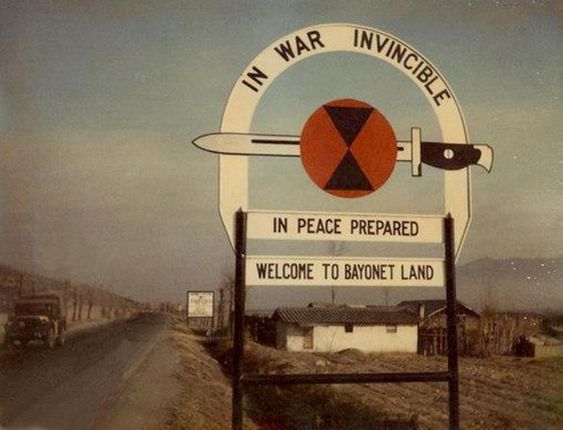
Flood Rescue, Eighth Army Style
My big brush with what we might call “the military versus the elements” came a little more than four months into my 13-month tour in Korea. As a recently promoted first lieutenant, I was second in charge of the security, plans, operations and training office of a headquarters outfit that oversaw a disparate collection of U.S. Army units in what was known to us as Ascom City. The Ascom complex abutted the small town of Bupyeong, on the Seoul, or eastern, side of Inchon (now spelled Incheon).
It was late June and I had only been in the country for about three months. Another lieutenant and I received the assignment to head up one of four flood rescue teams that might be required to rescue and take care of the residents of four islands in the Han River, the river that runs through Seoul. Most of Korea’s annual rainfall occurs during the very muggy days of the late summer. When that happens, the Han River can rise so much that the islands can be completely submerged and require evacuation. Each of the teams, which came from Army units around the Seoul area, was to be responsible for the evacuation of one island.
The first question that arose in my mind was why this task was the responsibility of the U.S. Army. The Han River has been flooding at that time of year throughout recorded history. One would think that the Koreans, who are not exactly unresourceful people, would have figured out how to cope with it. It was just 14 years after the end of the Korean War, though, and the country was still desperately poor. It might have been necessary for us to pitch in and help the Koreans with boats and helicopters should they need them in an emergency, but for us to assume the responsibility for evacuating Korean civilians struck me as rather misguided, along the lines of Rudyard Kipling’s “The White Man’s Burden.”
The one exception might have been Yoido (now spelled Yeouido. “Do” means “island” in Korean), where the U.S. military operated an air strip on the site of Seoul’s first airport, built by the Japanese occupiers in 1916. It had been supplanted as the city’s airport by the one in Kimpo (now spelled Gimpo), a few miles to the west toward Inchon, in 1958. Yoido is a bit upstream from the now exclusive section on the south bank known as Gangnam (gang = river, nam = south), recently made world famous by the K-pop rapper Psy. Yoido would have been most convenient for us, because it was by far the nearest island to our location; we could see it off to our left from the bridge when we drove into Seoul, and there was a small bridge to it.
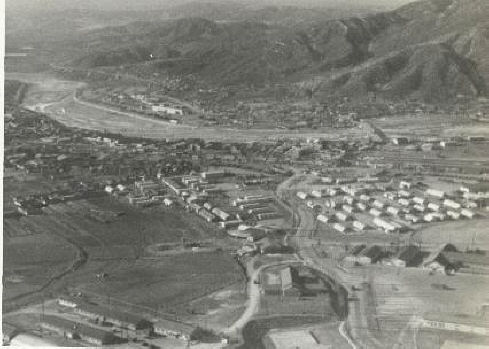
Unfortunately for us, every one of the other teams was closer to Yoido than we were, so we were assigned the most distant island much farther upstream. We were also the most distant team from that site. The most difficult part of our assignment, as we saw it, would be getting there, because we would have to find our way through the heart of Seoul. There was no bypass, and there were lots of city twists and turns. We certainly never could have accomplished it without our Korean Augmentation to the United States Army (KATUSA) driver.
Before we were to do our one dry run, we had a planning meeting, presided over by the lieutenant colonel from Eighth Army Headquarters in charge of the operation, at which the action plan was handed out. Right off the bat we noticed a problem. Each of the teams was identified with a number. We were team four. Each of the islands was also assigned a number, one through four, and they were called “sites.” Our team four was to go to site one, team three was to go to site two, and so on.
We wanted badly to suggest that it might be a better idea to match up the sites and the team designations, so that team one went to site one, etc., but we were told that we would have an opportunity to make suggestions for the final action plan after we had done our dry run, so we held our fire.
There was another small problem with our team that might have presented some difficulties: Our headquarters company had neither boats nor helicopters for rescuing anyone from an island. Our contribution to the effort was to be only a couple of large tents for people to keep dry under, the manpower to set them up, and two junior officers to take responsibility if anything went wrong.
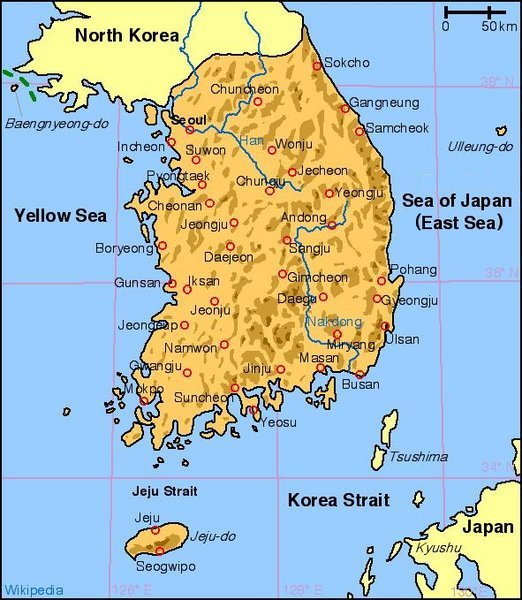
The rest of our team was to be made up of some enlisted men from an engineer battalion from Kimpo, which was to supply a couple of trailer-transported boats. We were to meet them at the site, some 20 miles on the other side of Seoul.
We had our dry run and, miraculously, things ran relatively smoothly. Following the times and directions on the action plan, we and the Kimpo crew with the boats arrived at the site within minutes of one another, apparently having taken about the same time to negotiate Seoul’s traffic, which was not bad in those days, before most people owned their own automobiles. We also made an important discovery in our reconnaissance mission. Less than a mile down the country road from the site where we were to launch the boats was a large Korean Army compound. It struck us that it might be a good idea to at least enlist their assistance in the rescue of their countrymen should it become necessary.

I suppose we might have gone down and introduced ourselves, but anyone who has ever been in the military would know that is not the sort of initiative that is encouraged. If the higher-ups had meant for us to engage in any sort of liaison with our Korean counterparts, it would have been included in our orders, or what is more likely, they would have done it for us. I did step a little outside the prescribed script by taking the trouble to get the direct office telephone numbers of the guys with the boats from Kimpo. No phone numbers had been included in the action plan. The Army is a very top-down organization; lateral communication is not encouraged and lateral communication outside the organization, particularly by underlings, such as any get-acquainted meeting with the local Korean Army detachment, would have been out of the question.
We did, on our after-action report, make note of the presence of the Korean Army compound near our rescue site, hoping the colonel would get the hint, and we had the absolute temerity to suggest that it might be better to make the team and site numbers the same, so as to avoid confusion. The final action plan ignored both the hint and the suggestion. Even worse, our teams were assigned radio call signs. Our team four’s call sign was to be “Ground Four,” Team Three was “Ground Three,” and so on. Remember, though, that we were to go to Site One, and all the other teams had sites different from their numbers. The potential for confusion was actually increased.
The Fateful Day Arrives
Predictably, it began to rain almost every afternoon starting around the middle of July, and the Han River eased toward flood stage. In the meantime, the training sergeant in our office had decided that it would be a good idea for the men in our company to get in their annual shooting qualification on the one range that the Eighth Army had in the limited land available in the area. That happened to be north of Seoul some distance from us. Reservations were required weeks in advance, as was an officer to supervise. I was the officer, boarding a bus early on an August morning just as a slow rain began, unusual for that time of day.
By the time we reached Seoul, the rain was approaching a downpour, and I began to grow concerned about my greater obligation to the flood rescue team. When the bus reached the Eighth Army headquarters at Yongsan in Seoul, I decided that I’d better get back to Ascom. The shooters went on without me, and I found transportation back to my office, arriving there around noon with the rain coming down ever harder. Then, sure enough, the call came down from a lieutenant in Eighth Army, one of the colonel’s assistants.
“We’re implementing the action plan,” said he, or words to that effect. “Move out immediately.”
Patting myself on the back for the decision I had made, and in a state of rather high excitement, I pulled out the phone number of the contact in the Kimpo engineer battalion to make sure that there would be boats for us when we reached our destination.
It is good that the phone worked—the military phones were something of a hit-or-miss thing at that time in Korea—considering his response. “We haven’t had any move-out order,” he responded to me.
I immediately got back on the phone to the Eighth Army lieutenant to ask him what was up.
“Hold that first order,” he said. “We’ve decided to give it a little more time.”
Now I was thinking that it was an especially good thing that I had not taken the “immediately” part of his move-out order too literally, and I was really glad I had gotten that boatman’s phone number. Considering the weather conditions, “high and dry” does not precisely describe the position we would have found ourselves in at the evacuation site without the boats and without even a need for them, but it comes close.
Having heard many reports of predicted river flooding on the news where the levels expected are based upon levels already recorded upstream, I inquired of the lieutenant as to the basis on which the final decision would be made. I remember his response as though it were yesterday:
“Colonel ‘Geronimo’ is down looking at the river.”
As it turned out, no one drowned because some would-be rescue helicopter had landed at Site 3 instead of the correct Site 2 because he had received an emergency radio call from Ground 3, and we never suffered from the lack of manpower that the Korean Army might have provided at our site. None of the islands flooded that day—or that year—and the “hold” on that first call from the Eighth Army lieutenant continued into perpetuity.
Bad Communications When It Counts
We will never know if the Army’s poor communications, particularly of the lateral variety, would have had really bad consequences in the flood business that year, but their luck would almost run out before I left Korea. I did not take my mid-tour leave until January, and I took it in Japan. A couple of days after my arrival in Tokyo I met an infantryman at the USO in Ginza who was on leave from the 2nd Division, up on the line in Korea. We decided to do our touring around Japan together. Not in any kind of a boastful manner, he told me of some of the excitement he had experienced in his army tour, which was so much different from what those of us further south had to face.
“The most frightened I’ve ever been in my life,” he told me, “was when our gung-ho commanding officer took a squad of us over into North Korea one night to shoot up a propaganda loudspeaker.”
The commanding officer turned out to be Roger H.C. Donlon, an officer right out of Dr. Strangelove who was the first medal of honor winner in the Vietnam War. (Donlon recently passed away).
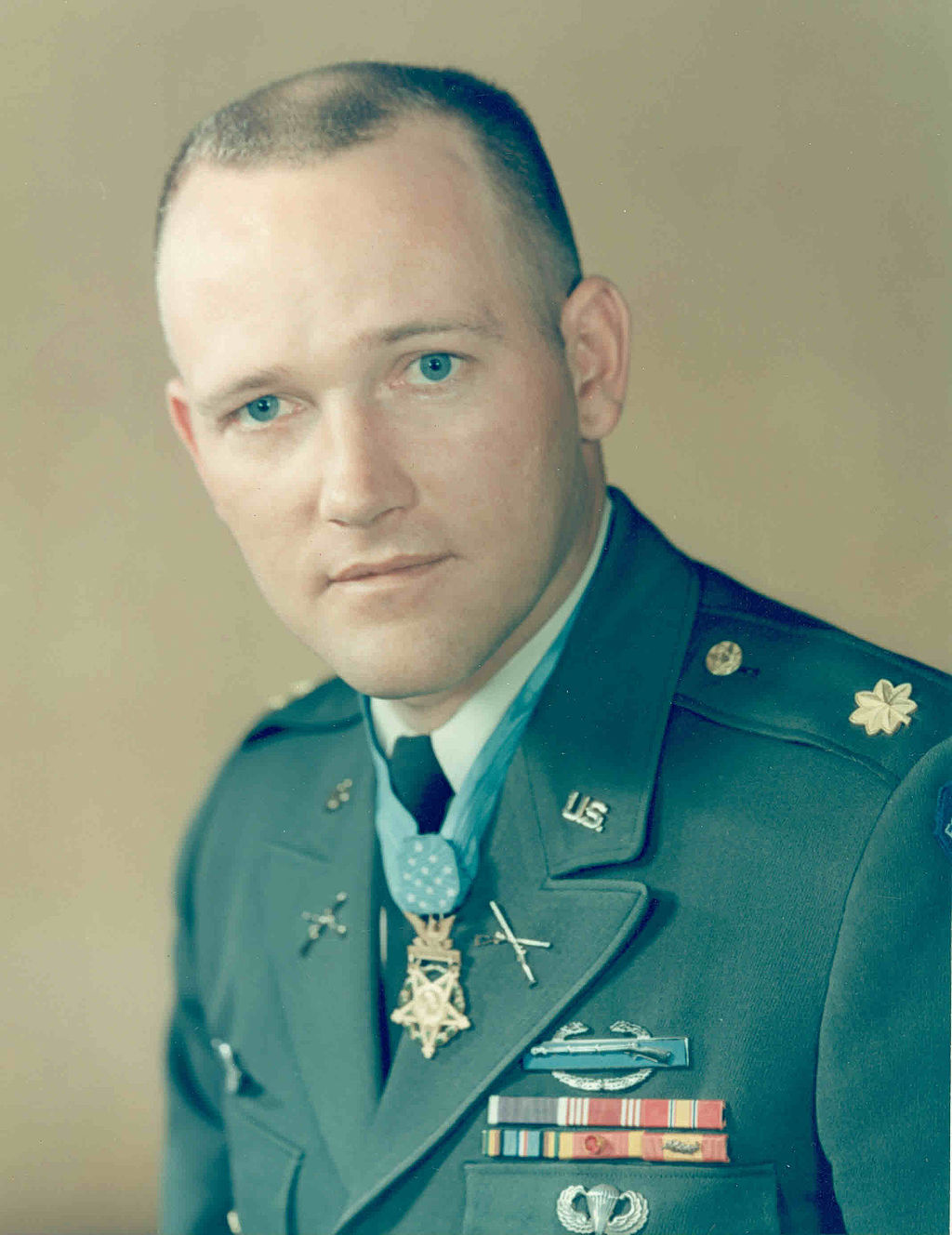
Fortunately, they had all returned from the mission into North Korea unscathed. It could have been a really embarrassing international incident. He also told me of the almost constant probing of the line by North Korean infiltrators. “Just a couple of nights ago,” he told me, “we heard a whole bunch of them come through. We fired in their direction, but we didn’t hit anybody.”
I think it was the next day when we saw headlines in a Japanese English-language newspaper: “North Korean assassination team stopped within blocks of the Blue House.”
“That’s them!” he immediately exclaimed upon seeing the newspaper.
“That’s who?” I responded.
“That’s the bunch we heard come through our lines. I told you there were a lot of them.”
The newspaper reported that there were 31 in all. All but one had been killed in a gun battle on the streets of Seoul. But the newspapers also reported that the group had not been detected until some Korean civilians gathering wood in the mountains saw them. That still seems to be the official position as of the date of this writing, according to Wikipedia. On the “Blue House Raid” Wikipedia site, we find this passage:
On January 16, 1968, Unit 124 left their garrison at Yonsan. On January 17, at 2300 hours, they infiltrated the DMZ by cutting through the fencing of the U.S. Army’s 2nd Infantry Division‘s sector and, by 0200 hours the next day, they had set up camp at Morae-dong and Seokpo-ri.
On the page for the Korean DMZ Conflict (1966-1969) we have this:
On the night of 17 January 1968, 31 men of Unit 124 penetrated the 2ID sector of the DMZ by cutting through the chain-link fence and passing undetected within 30m of a manned 2ID position. [Emphasis added.]
In fact, they were detected, if my traveling companion—who was likely one of the guys at that position—is to be believed. I have little doubt that they would have informed their higher ups. From my own experience, though, I seriously doubt that their superiors bothered to say so much as “watch out” to their Korean counterparts. As we have said, lateral communication was not their strong suit, especially across cultural lines. Covering one’s rear end, on the other hand, is one of their strongest suits. The truth of how we reacted to this known incursion would not have been well received in various important quarters and could have been quite damaging to a military career or two.
The aforementioned Wikipedia site also has this to say about intruder impediments:
The Barrier could not prevent infiltration (it was estimated that the North Koreans could cut through the fence in 30–40 seconds), rather it was intended to slow movement and provide easy observation. Behind the Barrier were the quick-reaction forces of mechanized infantry, tanks and armored cavalry who would hunt down infiltrators.
That all sounds very impressive, like a lot of U. S. Army boilerplate one reads, but, again, if my informant is accurate, and I have no reason to doubt him, they did not do much of a job of it in this instance.

Very little of what my companion had told me about the North Korean infiltration surprised me. A short time before, the Korean major in charge of the KATUSAs in our command, and I, in my capacity as chief of training, had sponsored a joint presentation by Korean Military Intelligence for both our Americans and our KATUSAs. We had a presentation by a North Korean defector and they showed us a film that depicted exactly the sort of rigorous training that the infiltrators were receiving, giving them the ability to move with surprising speed on foot over mountainous terrain.
My recollection is that the initiative for that presentation came entirely from the Korean major, and he worked through me, not my superiors. I have no recollection of any direction coming from Eighth Army to provide such information to the troops.
Postscript

[Source: en.wikipedia.org]
Early that spring, in 1968, as I traveled into Seoul, I noticed some changes taking place on Yoido. The Koreans, who apparently lacked the wherewithal to rescue their own people from the river, were bringing in a steady procession of dump trucks full of dirt and were building the island up.
By the time I left, an impressive transformation had begun to take shape. Yoido, now virtually immune to floods, has become an important part of Seoul. The National Assembly Building is there, and it is the city’s main business and investment banking district.
CovertAction Magazine is made possible by subscriptions, orders and donations from readers like you.
Blow the Whistle on U.S. Imperialism
Click the whistle and donate
When you donate to CovertAction Magazine, you are supporting investigative journalism. Your contributions go directly to supporting the development, production, editing, and dissemination of the Magazine.
CovertAction Magazine does not receive corporate or government sponsorship. Yet, we hold a steadfast commitment to providing compensation for writers, editorial and technical support. Your support helps facilitate this compensation as well as increase the caliber of this work.
Please make a donation by clicking on the donate logo above and enter the amount and your credit or debit card information.
CovertAction Institute, Inc. (CAI) is a 501(c)(3) non-profit organization and your gift is tax-deductible for federal income purposes. CAI’s tax-exempt ID number is 87-2461683.
We sincerely thank you for your support.
Disclaimer: The contents of this article are the sole responsibility of the author(s). CovertAction Institute, Inc. (CAI), including its Board of Directors (BD), Editorial Board (EB), Advisory Board (AB), staff, volunteers and its projects (including CovertAction Magazine) are not responsible for any inaccurate or incorrect statement in this article. This article also does not necessarily represent the views the BD, the EB, the AB, staff, volunteers, or any members of its projects.
Differing viewpoints: CAM publishes articles with differing viewpoints in an effort to nurture vibrant debate and thoughtful critical analysis. Feel free to comment on the articles in the comment section and/or send your letters to the Editors, which we will publish in the Letters column.
Copyrighted Material: This web site may contain copyrighted material the use of which has not always been specifically authorized by the copyright owner. As a not-for-profit charitable organization incorporated in the State of New York, we are making such material available in an effort to advance the understanding of humanity’s problems and hopefully to help find solutions for those problems. We believe this constitutes a ‘fair use’ of any such copyrighted material as provided for in section 107 of the US Copyright Law. You can read more about ‘fair use’ and US Copyright Law at the Legal Information Institute of Cornell Law School.
Republishing: CovertAction Magazine (CAM) grants permission to cross-post CAM articles on not-for-profit community internet sites as long as the source is acknowledged together with a hyperlink to the original CovertAction Magazine article. Also, kindly let us know at info@CovertActionMagazine.com. For publication of CAM articles in print or other forms including commercial internet sites, contact: info@CovertActionMagazine.com.
By using this site, you agree to these terms above.
About the Author

David Martin is author of The Assassination of James Forrestal and The Murder of Vince Foster: America’s Would-Be Dreyfus Affair.
His writings can be found online at his website, dcdave.com, at heresycentral.net and at Rense.com.
David is co-author, together with Hugh Turley, of The Martyrdom of Thomas Merton: An Investigation, and Thomas Merton’s Betrayers: The Case Against Abbot James Fox and author John Howard Griffin.
David can be reached at: dcdave2u@verizon.net.

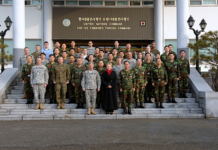
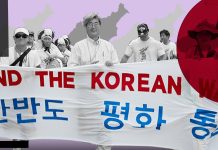
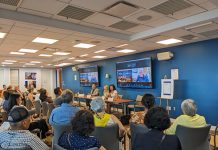
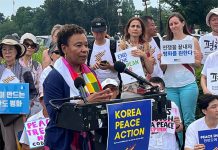

Thanks David, for shining this particular light on the operations of the US Army during that period. I can’t imagine that things have gotten better. We have exchanged about experiences during that period for you and mine in Nam. After 3 months recovering from wounds in Japan (still have problems) I was sent to re-assignment with 10 seconds to decide on Korea or Okinawa. I couldn’t say “OKINAWA” any faster. And that’s where I went. I loved it. Of course we were aware of the “CF” that was taking place on your DMZ and after my grunt experience with the 2/27 Wolfhounds for 5 months and wounding, up island Okinawa was paradise. I was involved on the ground as an 11Bravo in Nam E-4 and missed E-5 with a squad when wounded and hospitalized in Japan. Of my 24 months in service, 17 straight was in Asia. My choice. I just wanted to go home ….once.
Thanks for what you do.
Steve Pahs